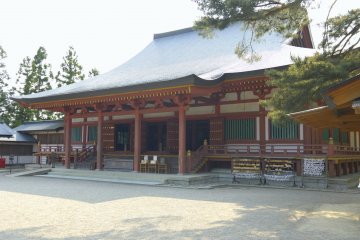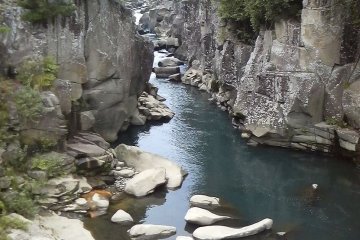
Le Chūson-ji à Hiraizumi
Tom RoseveareHiraizumi, jolie ville rurale du sud de la préfecture d’Iwate, offre à la fois une plongée au cœur du Tōhoku et un aperçu spectaculaire d’un Japon plus historique.

Chusonji is a Buddhist temple in the city of Hiraizumi in southern Iwate Prefecture. It is the main temple of the Tendai sect in the Tohoku region in northern Honshu. The temple is said to have been founded in 850 by Ennin, a monk associated with Enryakuji Monastery and the third abbot of the Tendai sect. Ennin is also known for the autobiographical record of his travels and studies of Buddhism, considered by some to be one of the greatest travelogues in the world.
In the dedication commitment for the Chusonji Temple it is written that all travelers, regardless of their status, will be lovingly welcomed by the Buddhas and would receive their blessings without exception.
In 1337 a fire destroyed many of the temple's halls, pagodas, and treasures. Nevertheless, more than 3,000 national treasures and important cultural assets survived, including above all the Konjikido, the small, golden Amida hall, which was the first building to be declared a Japanese national treasure.

Hiraizumi, jolie ville rurale du sud de la préfecture d’Iwate, offre à la fois une plongée au cœur du Tōhoku et un aperçu spectaculaire d’un Japon plus historique.

The Motsuji Temple was once a large and important temple of the Tendai sect and consisted of numerous buildings. Today Motsuji is best known for his garden, which tried to recreate the Buddhist concept of the pure land or "Buddhist paradise". The history of the temple tells that in 850 the priest Ennin, the third abbot of the Tendai sect, was traveling in northern Japan when he got lost in a thick fog in this area. When Ennin looked at his feet, he noticed the hair of a white stag. Ennin approached the stag, but it disappeared in the fog. A silver-haired old man appeared in his place and told the abbot that this was a sacred place and that he should build a temple there. Ennin sensed that this old man was an incarnation of Buddha Yakushi and followed his advice. Motsuji has some buildings that are extremely interesting for visitors. This includes the main hall of the temple and a treasure house where Motsuji's historical and cultural artifacts are exhibited.

La gorge de Genbikei est une section de 2 km de long de la rivière Iwai, connue pour son paysage accidenté et ses étendues d'eau vive. Les rochers et les falaises sont un monument national et sont encadrés de fleurs de cerisier au printemps, d'azalées en été et de tons rouge vif, orange et jaune des feuilles en automne. Le bruit des eaux tumultueuses enchante les visiteurs sur la plate-forme d'observation et sur le sentier de randonnée qui court des deux côtés de la gorge. Des promenades en calèche sont également possibles d'avril à octobre. En plus de la vue à couper le souffle, de nombreuses personnes visitent la gorge pour la spécialité locale de genbikei, le populaire "kakko dango" (boulettes de riz gluant sucré). Le long de la gorge, il y a un pavillon où les visiteurs peuvent commander dans une boutique pittoresque. Les marchandises sont ensuite transportées sur un panier suspendu.

Hiraizumi, paisible recoin de la préfecture d’Iwate, fut il y a bien longtemps le centre culturel et commercial autour duquel gravitait près du tiers du Japon.